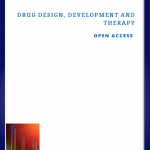Andrea Pfleger, Jürgen Hofäcker, Waltraud Scherer-Pongratz, Harald Lothaller, Christian Reich and Peter Christian Endler
The effect of extremely diluted agitated gibberellic acid (10e−30) on wheat stalk growth—A two researcher pilot study
Compl Ther Med, 2011, 19 (3), 164-169

Objective - Use of a wheat growth bio assay after 7 days in research on homeopathic dilutions of gibberellic acid.Methods - Grains of winter wheat (Triticum aestivum, Capo variety) were observed under the influence of extremely diluted gibberellic acid (10−30) prepared by stepwise dilution and agitation according to a protocol derived from homeopathy (30×). Analogously prepared water was used for control. In a two centre study, 3 experiments with a total of 4880 grains were performed.Results - Data were found to be rather homogeneous within the control group as well as within the verum group in general. Germination rates were around 95%, with no significant difference between verum and control group (p > 0.05). Mean stalk lengths (mm) were 40.63 ± 20.96 for the verum and 44.33 ± 21.11 for the control group (mean ± S.D.) at grain level (N = 2440 per group) and ±5.33 and ±5.89, respectively at dish level (122 cohorts of 20 grains per treatment group). In other words, verum stalk length (91.65%) was 8.35% smaller than control stalk length (100%). This difference is statistically highly significant (p < 0.001) and was found by both researchers involved independently.Conclusion - These results suggest that there was an influence of gibberellic acid 30× on wheat seedling development, i.e. the wheat growth bio assay can be a useful tool for further experiments on homeopathic dilutions of gibberellic acid.







